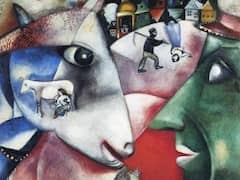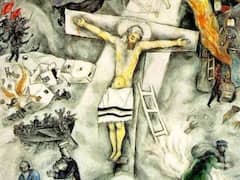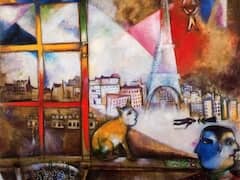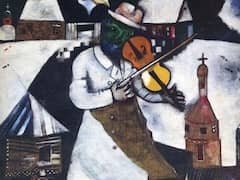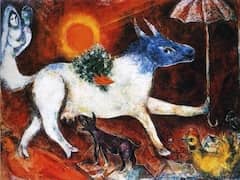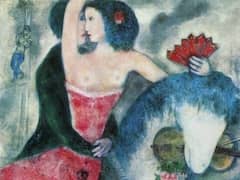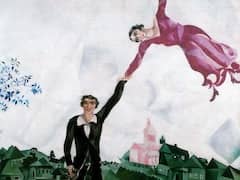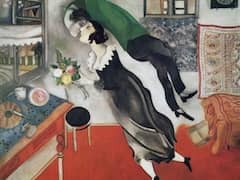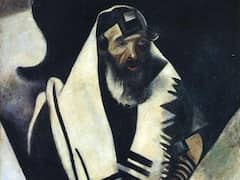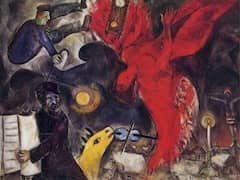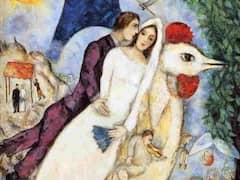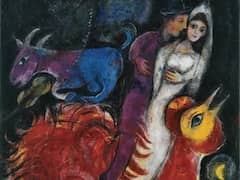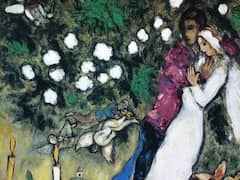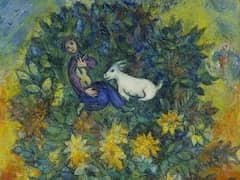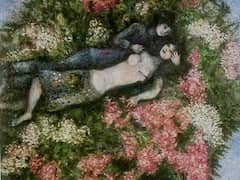La Mariée, 1912 by Marc Chagall
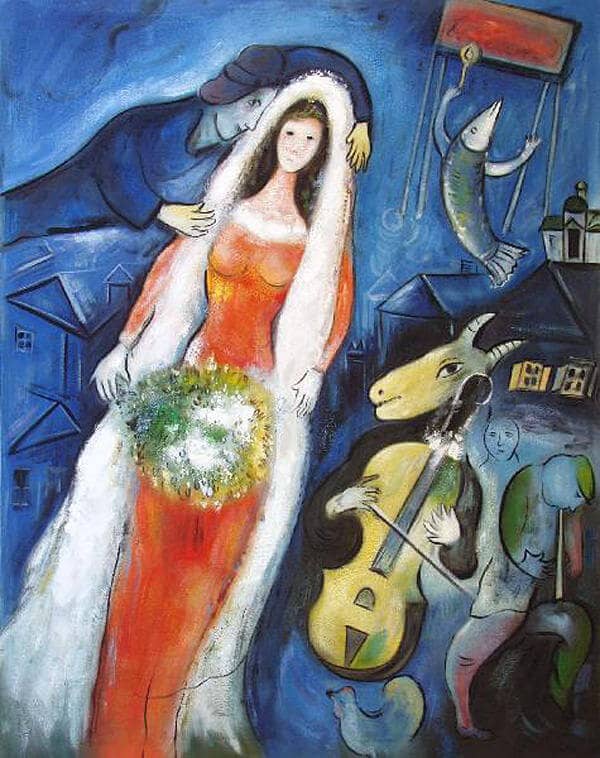
La Mairée (The Bride) features a young woman in her bright vivid red wedding dress clutching her bouquet of flowers. Her long white veil covers her head and reaches down to her feet. In contrast, the background is a mixture of blues and grays. The background, coloured as it is, evokes the darkness of night and in some ways a feeling of sorrowfulness and gloom whereas the colours used with the bride suggest a sense of elation and happiness.
It is this dissimilarity of the background colours and the colours of her dress which also projects the image of the woman towards us. She is being presented to us, the observers, by the man in such a noticeable and confident way that makes us believe that she is our bride and we are the groom.
To the right of the woman is a goat playing a cello. This strange combination of an animal playing a musical instrument was often used by 20th century European artists. A fish leaps high and looks as if it is conducting the music. A table floats above the fish. To the right of the goat we can see a man playing what looks like a clarinet. The man hovering above the woman, presents her to us and as he adjusts her veil.
La Mariée is a marvellous metaphor of the world which surrounds the painter and his beliefs. The painting depicts the intermingling of the real as well as the imaginary world. Mariee, the bride, is dressed in a red wedding dress. The blue background portrays darkness, gloominess and sadness. Contrary to this, in the foreground the bride in her quasi wedding attire expresses joy and sensuality. In the painting, it seems as if the couple is floating. The use of vivid colors and wild imagination brings life to the painting.

